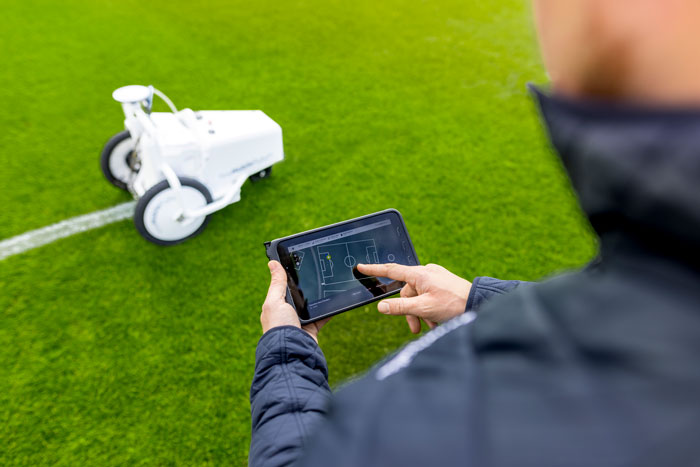By Jim Mueller
The other day I came across a quote by Peter Drucker, a famous management consultant who once said, “There is nothing so useless as doing efficiently that which should not be done at all.”
Field painting immediately sprang to my mind. We’ve all sweated away an afternoon prepping and painting fields for a tournament—measuring, lining, staking, painting, and painting again to get those lines extra bright.
In my parks & rec days, I had a few guys who really knew what they were doing. They could string a field out and paint it in their sleep. They’d use the 3:4:5 triangle to get the corners perfect, and they’d run a cable down the center of the field to measure off of for the interior lines—all in less than an hour.
Most parks & rec departments have a crew like this. We all wish we could clone them. Nobody in this work is unfamiliar with the labor problem. What happens when your most reliable, experienced guys get sick or decide to retire? How do you find someone to replace them while still meeting the demands of the season?
But even if you could clone them, that’s still three guys taking an hour to paint a single soccer field. Would you have the budget for that?
Maybe the real question, the one Peter Drucker would ask, is “Should we be painting fields this way in the first place?”
The fact that crews are running strings for reference (not for painting), double-painting to get the brightness they want and painting fields just to keep from losing the existing lines tells you all you need to know.
Field painting is due for a system upgrade!
We have specialized equipment for everything else—mowers, edgers, power washers, seed spreaders, you name it. So why are crews still using strings, stakes (aka screwdrivers stuck in the ground) and the Pythagorean theorem to paint fields?
Field painting robots have been around for a while, but now they are finally reaching a level of sophistication and affordability that actually make their purchase feasible for parks & rec departments. The latest machines use advanced GPS technology that eliminates the need for complicated base stations, and they let crew members resize and place fields through a drag-and-drop interface that couldn’t be easier.
These robots can paint fields from scratch, eliminating the need for tapes and strings. Their lines are surgically accurate, bright and crisp, every single time. And they can paint fields faster than even the best crew.
For departments strapped for manpower and budgets, a field painting robot can be a game changer. They’re easy and lightweight enough for anyone to operate, so the department no longer has to rely on special skills. They’re automatic, so while the robot runs, the operator can multi-task with other jobs. They use paint more efficiently and allow crews to paint less often, creating significant savings on paint. In fact, savings are usually enough to pay for the robot in only a year or two.
Think of all the things that never seem to get done. How much more could your crews accomplish if painting a soccer field only took one person and 20 minutes? And it improves the efficiency and productivity of your crews, who may not even get to take a lunch break during the busy season.
It’s time to cut out all the wasted motion around painting—the lining and staking, painting just to keep from losing the pre-existing lines. Field painting robots are the force multiplier that empower parks & rec departments to actually get ahead and stop sweating their lives away painting fields. RM
ABOUT THE AUTHOR
Jim Mueller has 20 years of parks & recreation management experience. He’s worked throughout the organization from a field crew member all the way up to park superintendent. He has managed the painting and maintenance of professional football and soccer fields and Division I football fields.



